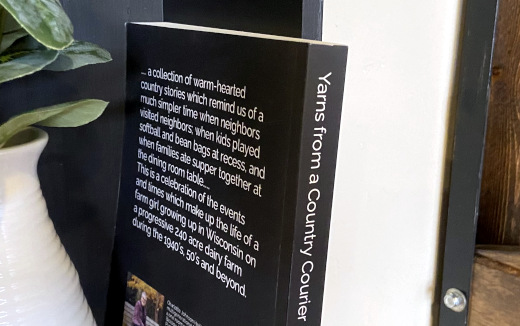My Takeaways From Atomic Habits

(AI-generated image of a man thinking at an atomic level by DALL-E)
When I told friends I was moving to Chicago from Boston almost 2 decades ago, one said to me he was surprised; he saw me as a “Boston guy” and thought I would never leave. We talked about this over adult beverages, and I told him that it was a decision my wife and I made, and it came rather naturally and where we knew there would be a lot of logistics, we were eager to welcome this change in our lives.
That’s the funny thing about change – sometimes it’s easy, and many times it’s hard. Even when you know you have to make a change, that in itself may not be enough for some people. This thought process and changes in habits is what the book Atomic Habits by James Clear is all about.
Atomic Habits centers around 4 “laws” – evidence-based approaches in how to not just overcome but make lasting change, with reinforcements and stories to support them. I won’t go into detail on what those laws are, rather I will simply share my greatest takeaways from the book. If you are interested in detailed synopsis of the book, you can read it here on James Clear’s own Web site.
And those takeaways are...
Goals vs. Systems that lead you to said goals – The concept of goals in themselves have been getting a lot of scrutiny in both books and podcasts I have consumed, and I believe it’s with good reason. Many times goals are unrealistic or are structured to not account for change or outside influences. If you have a goal without the “system” that’s needed to meet it, there’s a likelihood it may never happen. Elements of said system are outlined in the books, and can range from the space or support needed to achieve it.
Add friction – When I read this, the first thing I thought of was how I don’t have the LinkedIn mobile app on my phone. Why? As it’s my last bastion of legacy social media, I don’t want to go to it constantly when I have a few minutes or need a diversion and get into an endless scroll. I can access it with a mobile Web browser, but the user experience is so horrible that when I do it, I don’t spend a lot of time on it. That friction is enough to help to stop wasting my time.
... With a little help from my friends – This reminded me of efforts in the past where I was involved in networking groups that helped keep progress to setting and making goals. Networking over the years like Circle of Progress and Business Forward were helpful. I also recalled when I was doing these and a colleague coined a phrase “accountabilibuddy” – though tongue-in-cheek, having someone who helps keeps someone else accountable can be the difference maker.
Orosensation – I always strive to find new words (to me) in books, and orosensation was one here, which means how something feels in your mouth.
Stronger Together – I read this book with another work colleague as part of a book club. I had put the idea out there to my team and though he was the only to respond, it was the others on my team who were at a loss as they missed an opportunity to collaborate on this book. It was a worthwhile experience, and gained a lot of insight on parts of the book that as seen through others. Thanks Kenny!
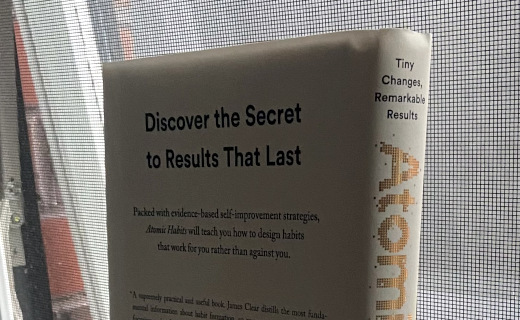
Since it came out in 2018, Atomic Habits has been a personal and business best-seller that I have heard many people talk about and have often seen it in prominent displays at bookstores and airports. After reading it, I know why. It is easy to read and relate to, and I recommend it anyone who is looking to make some change in their lives and it just isn’t sticking with them. The giveaway of this book is (I hope) serendipitous, as I left it in the seatback pocket on a recent plane ride. I hope someone came across it before the plane was cleaned (do they even clean planes that detailed these days?) and perhaps it can help make a difference in their life.
This is from The Hot Iron, a journal on business and technology by Mike Maddaloni.
Did you enjoy this? Subscribe to The Hot Iron by RSS/XML feed or Read by Email
Book Take-Aways • (0) Comments • PermalinkMy Takeaways From A Christmas Carol
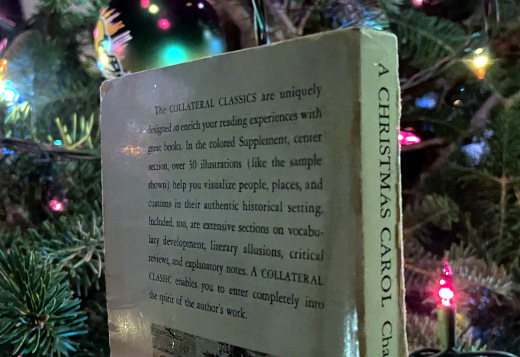
For as long as I can remember I have seen versions of A Christmas Carol performed. The classic Charles Dickens tale of redemption for the holidays has been performed in plays and on TV. Yet for as long as I can remember I have never read the actual text of the story. This is extremely ironic, as I have owned a copy of it since before I could even read! Yes, the picture accompanying this post was given to me as a child, and it has remained with me over the myriad of moves over my life. On a recent work trip I packed it in my carry-on bag to read on the flight.
Would reading the actual, non-adapted words of the author be unique experience from seeing George C. Scott amongst others reciting the words of Ebenezer Scrooge? And would it be possible to have takeaways from such a seminal story? Yes, and yes.
Enjoyed read the original story – It was a pleasure to read the actual words of Charles Dickens now over 180 years from when it was originally published. Where the presentation was classic British English, it was a nice contrast to the adapted and embellished narratives I have watch on big and small screens and live in such venues as the Goodman Theater in Chicago.
Staves not Chapters – Each of what I would traditionally consider a chapter in the book was called a stave. As I am unfamiliar with the term, I had to look it up. I found this great description of what a stave is, as it’s rooted in music, and relates to the title being a carol and thus a song. This is something I never picked up from any performance.
How to get the good out of other – I have always felt that most people have good at their core, and for whatever reason it has been hidden or warped by layers that have cocooned it over the years. In the original words that unraveling of Scrooge’s bitterness happens rather quickly upon encountering the Ghosts. From personal experience, however, people don’t change that rapidly. Then again, how many ghosts have they seen?
My copy of A Christmas Carol was published in 1966 and cost a whopping 50 cents. Illustrations from the period of the 1800’s when the book was written are included in each paragraph, er, stave. In the middle of the book is a “reader’s supplement” which includes additional notes and illustrations to help paint the picture of life in that period.
If you’ve never read A Christmas Carol and you are someone who celebrates the season as a religious or secular holiday, I highly recommend getting a copy of it. Where giving away to others what I read is a tradition here at The Hot Iron, I am going to pull a Scrooge and keep this copy in the home – I have owned it this long, and will pass it along to my family.
This is from The Hot Iron, a journal on business and technology by Mike Maddaloni.
Did you enjoy this? Subscribe to The Hot Iron by RSS/XML feed or Read by Email
Book Take-Aways • (0) Comments • PermalinkMy Takeaways From Yarns From A Country Courier
“There are eight million stories in the Naked City; this has been one of them.” That famous line is from the movie The Naked City, a story about a murder in New York City. Sure, in a city of that many people there are certainly that many stories if not more. But what about elsewhere? Take a more less-populated area, for example. Of course there are, and the book Yarns From A Country Courier by Charlotte Heikkinen is a collection of stories by this teacher / journalist from her life as she chronicled them in her newspapers columns over the years.
My interest in this book is rooted in the fact I know Charlotte’s sons, both of whom are of course mentioned in her stories. I bought a copy of this self-published tome from the author herself, as she setup a shop at a local community market. As I read through her tales of growing up in the rural Midwest, among the yarns of her life I had several takeaways.
A slice of history – The tales told here are much more than a personal story of one woman, but the story of how life was where she was at that time. These stories need to be told, and each one is a square in the vast quilt of history.
Know your audience – Just before I bought my copy of the book she was talking to the person in front of me who was buying their own copy. She told them the text is in big print to benefit her target audience of an older generation. As I write this post I am nodding my head getting used to my new bifocals, so I appreciate the attention to detail to have larger text on the page for her readers.
More encouragement to write my own – After reading the book I said to myself, as I have said before, “I need to write my own book.” I guess I can say I am making progress towards it one blog post at a time. And for as much as I encourage others to write and publish their own book, I need to start making a more concerted effort on my end.
Yarns From A Country Courier was an enjoyable read, telling the stories of life from the middle of the last century to the present. I especially liked the mentions of her sons, but I digress. For anyone interested in the personal nuances and challenges of rural life at that time, I highly recommend the book. As I pass along all books I read, I am passing it along to the parents of another friend of mine – I have enjoyed engaging in conversations with them over the years and have enjoyed their stories; perhaps after reading this they too may be motivated to write their own book?
This is from The Hot Iron, a journal on business and technology by Mike Maddaloni.
Did you enjoy this? Subscribe to The Hot Iron by RSS/XML feed or Read by Email
Book Take-Aways • (0) Comments • PermalinkMy Takeaways From The Song Of Significance
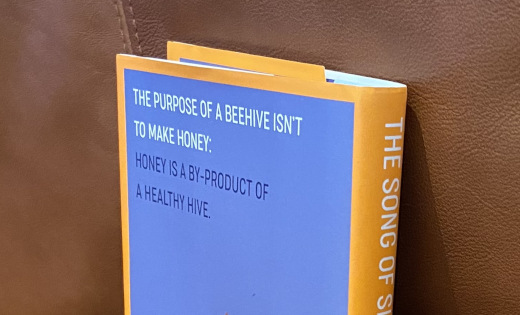
Have you ever gotten to the end of the work day and said to yourself, "self, what was that all about?" Whether you are stepping away from a home work setup or plunking yourself onto the seat of a car, bus or train, many people have feelings like this on a regular basis. And perhaps have had them in some cases for some time.
We know there's a better way. In his latest book - his 21st book overall - business consultant Seth Godin sums up the issue with one word – significance. The Song of Significance is a call (or a plea; choose your action word) for a better, more rewarding way for people to work. It features real cases from business throughout the verses (not chapters) of the book who are fostering a culture of significance. The imagery of the bee on the cover and in the book comes from how a beehive works.
I was lucky enough to get this book through the Marketing Over Coffee podcast, as one of the co-hosts John Wall did a great interview with Godin and he gave John copies of the books to offer to his listeners. Though a quick read, it was packed with thoughts and I got many takeaways from this book.
I generally agree with this – As someone who has worked for companies, as a consultants to them as well as having my own business, I have strong feelings on how teams should work collaboratively and be in concert with a greater vision and mission of an organization.
Limen – It is always my hope that, if anything, I will learn some new words from a book. From verse 61 it is “limen” which is the stone or beam at the top of a threshold or doorway. It is also a point where a stimulus can produce a response, but the secondary one is not the intended definition. Here the reference is about an in-between place.
Think Globally, Act Locally – Being in agreement with having significance in ones work is one thing, making it happen is another. Even if you or I are not in a position to make global change, seek out the ways to make significance in what you do personally. Then expand it from there, to your immediate team, department, division or beyond. This is something I have always strived to do in my own teams, against all odds.
The Song of Significance has an accompanying booklet which is meant to be distributed to teammates. It is a summary of the salient points of the overall book. This is a unique idea that maybe more books should have.
If you’re looking to make change in your team or organization or just looking for some motivation for yourself, I recommend reading The Song of Significance. I will be giving my copy of the book, and some of the booklets, to a colleague who works at my co-working space. He and I talk frequently about work and teams and I know he will appreciate this book.
This is from The Hot Iron, a journal on business and technology by Mike Maddaloni.
Did you enjoy this? Subscribe to The Hot Iron by RSS/XML feed or Read by Email
Book Take-Aways • (0) Comments • PermalinkMy Takeaways From War For Eternity
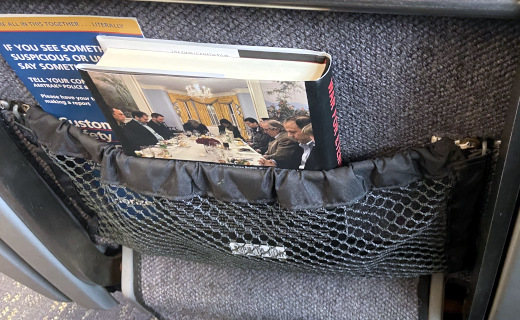
Of all the books I’ve read and blogged on over the years, it’s no surprise I have enjoyed some more than others. There were some where going into reading them I didn’t exactly know if I was going to like it or not. In most cases I did but they were a few where I didn’t for a variety of reasons. Then there’s the book War for Eternity: Inside Bannon's Far-Right Circle of Global Power Brokers by Benjamin Teitelbaum. I was given it as a gift a while ago and when I got it I said to myself, what’s this about? I tucked it into the back of my bookshelf and recently rediscovered it and decided to give it a read.
As when I first got the book, upon finishing it I asked myself, what’s this about? It is a story of the life of Steve Bannon, a man who has done everything from being Chief Strategist to President Donald Trump to a part-owner of the sitcom Seinfeld. Where it tells much of his life’s story it is not a biography per se, rather it touches on many of his past events and activities that led him to the inner circle of the White House and his belief in Traditionalism. Despite the ambiguity that clouded me as I read the book, I always manage to find takeaways from every book I read.
Traditionalism – Prior to reading the book, I had never heard the term Traditionalism before, and even as I got into the book, I started looking up the term online from various sources to try to wrap my head around it. From what I gathered it is a belief in traditional, conservative values with a deeper, spiritual meaning. I think.
At Cambridge Analytica – Beyond Traditionalism, of the events in his life referenced include his time in the Navy and the fact that he had a role at Cambridge Analytica. This was something that was a surprise to me because where I had heard about Cambridge Analytica in the news and it’s relation to Facebook, I never heard about any tie to Bannon. With the controversy around the firm and its involvement with targeting voters in the 2016 election, someone like myself who considers himself informed thought I should have been aware of this.
Riding the Tiger – This is actually the second time I heard of this tale, which is taken from a book by Julius Evola of the same name. The tale is (and I am loosely paraphrasing it) of a man who was threatened by a tiger and was unable to defeat it, so he decided to jump on its back and ride on it until the tiger was too tired to attack him. The first time I heard this was from the book No Hero which I recently read and wrote about.
War for Eternity was an interesting book, though I’m undecided as to whether or not I recommend it. If you are looking for a read outside of what you may normally read this might be a book to consider.
As I giveaway all books I read I decided to give this one away to the general public. I placed it – as you can see in the accompanying photo – in a seat back pocket on an Amtrak train from Milwaukee to Chicago. Hopefully somebody picked it up and decided to give it a try.
This is from The Hot Iron, a journal on business and technology by Mike Maddaloni.
Did you enjoy this? Subscribe to The Hot Iron by RSS/XML feed or Read by Email
Book Take-Aways • (0) Comments • Permalink
